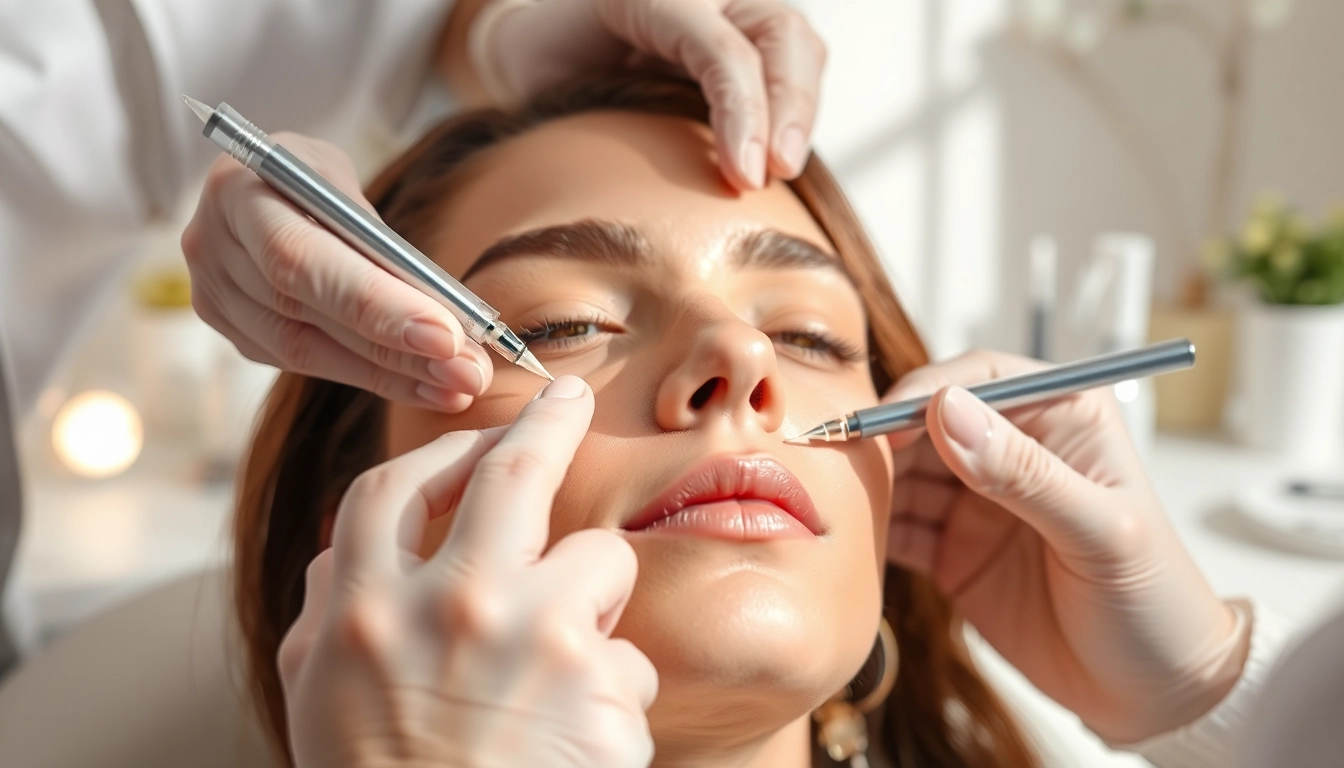
Achieve Your Ideal Look with Facial Balancing with Fillers
In today’s fast-paced world, the aesthetics industry continues to evolve rapidly, offering innovative solutions to enhance personal beauty. One such technique that has garnered significant attention is facial balancing with fillers. This non-surgical cosmetic procedure uses injectable dermal fillers to harmonize facial features, enhancing symmetry and overall appearance. In this comprehensive guide, we’ll explore the ins and outs of facial balancing with fillers, from understanding its fundamentals to the essential steps for achieving the desired results.
Understanding Facial Balancing with Fillers
What is Facial Balancing?
Facial balancing is an aesthetic treatment aimed at improving the proportions of the face and enhancing overall harmony through strategic filler placement. Unlike traditional filler use, which often focuses on a single area—such as lips or cheeks—facial balancing takes a holistic approach. The goal is to evaluate the entire facial structure and make adjustments that will result in a more balanced appearance.
The Importance of Symmetry in Aesthetics
Symmetry plays a crucial role in the perception of beauty. Studies in psychology and aesthetics support the idea that symmetrical faces are often considered more attractive. This fascination with symmetry can be traced back to ancient cultures and has been reflected in art, architecture, and beauty standards throughout history. In modern aesthetic practices, facial balancing works to address asymmetries caused by aging, genetics, or other factors, striving for an appearance that meets these aesthetic ideals.
How Fillers Enhance Facial Features
Fillers are gelatinous substances injected into the skin to restore volume, smooth out wrinkles, and enhance features. The most common type used in facial balancing is hyaluronic acid, a naturally occurring substance in the body that helps maintain skin hydration and elasticity. By replenishing lost volume in specific areas of the face, fillers can accentuate cheekbones, refine jawlines, soften nasolabial folds, and achieve the desired facial proportions.
Benefits of Facial Balancing with Fillers
Minimally Invasive Procedure
One of the primary advantages of facial balancing with fillers is that it is a minimally invasive procedure. Unlike surgical options that involve incisions and longer recovery times, fillers require only a few injections and can usually be completed in under an hour. This appeal makes facial balancing an attractive solution for individuals looking to improve their appearance without the risks and downtime associated with surgery.
Quick Recovery Times
Following the procedure, patients can typically resume their daily activities almost immediately. While there may be minor swelling or bruising at the injection sites, these effects usually subside within a few days, allowing for a quick recovery. This aspect is particularly appealing to busy individuals who want aesthetic enhancements without extensive downtime.
Natural-Looking Results
When administered by a skilled practitioner, facial balancing with fillers produces natural-looking results. The goal of this method is not to create an exaggerated appearance, but rather to enhance the individual’s features in a way that looks authentic. This subtle approach allows individuals to feel more confident in their appearance without the tell-tale signs of cosmetic treatment.
Common Areas Treated in Facial Balancing
Accentuating Cheekbones
High cheekbones are often associated with beauty and youthfulness. Facial balancing with fillers can enhance the cheek area by adding volume and definition, thereby creating a more sculpted look. By placing fillers strategically above the cheeks, practitioners can elevate the face’s overall aesthetic and define the cheekbones without making the face appear overly manipulated.
Reducing Nasolabial Folds
Nasolabial folds are the lines that extend from the nose to the corners of the mouth, often deepening with age. Facial balancing techniques can help soften these lines by replenishing volume in the surrounding areas, thereby reducing the appearance of the folds. This technique not only enhances the smile but also contributes to a more youthful appearance.
Refining the Jawline
A defined jawline is often desired for its associations with strength and attractiveness. Fillers can be used to contour and refine the jawline by adding volume beneath the skin, helping to create a more pronounced jaw structure. This transformation can significantly enhance facial symmetry and create a chic, defined profile.
Choosing the Right Practitioner for Facial Balancing
What to Look for in Credentials
Selecting the right medical professional for facial balancing is crucial to ensure safety and achieve optimal results. Look for practitioners who specialize in aesthetic medicine and have in-depth experience with dermal fillers. Credentials such as certifications in cosmetic procedures, training in facial anatomy, and a solid portfolio of past work can indicate a practitioner’s proficiency.
Questions to Ask During Consultation
Before undergoing treatment, it’s vital to have a thorough consultation with your practitioner. Prepare a list of questions that address your concerns. Some questions may include the following:
- What type of fillers do you use, and why?
- What techniques do you employ for facial balancing?
- What should I expect during and after the procedure?
- Can you show me before-and-after photos of previous patients?
These questions can help gauge the expertise of the practitioner and ensure a comfortable and informed treatment experience.
Understanding Techniques and Dosage
Different practitioners may employ various techniques and dosages tailored to individual needs. Understanding the techniques your practitioner uses, as well as the specific dosages involved, can help you feel more comfortable with your treatment plan. Make sure to discuss the expected results and how long they might last.
Maintaining Results After Facial Balancing with Fillers
Follow-Up Appointments
To ensure optimal results, follow-up appointments may be necessary. These sessions allow the practitioner to assess how your face is responding to the filler and make any necessary adjustments. Regular check-ups can also help maintain the desired look, as fillers typically last anywhere from six months to two years, depending on the type used and individual factors.
Skincare Routine for Lasting Effects
Adopting a thorough skincare routine can help prolong the results of facial balancing with fillers. Incorporating products that promote skin health such as serums with hyaluronic acid, retinoids, and antioxidants can keep skin hydrated and youthful. Sun protection is also crucial, as UV exposure can accelerate the aging process and diminish the longevity of fillers.
When to Consider Touch-Ups
As fillers naturally break down over time, touch-ups may become necessary to maintain your enhanced appearance. It’s essential to consult with your practitioner to determine the best timeline for touch-ups based on your individual results. Regular maintenance can ensure that your facial balance remains harmonious and aligned with your aesthetic goals.
Conclusion
Facial balancing with fillers presents an effective and minimally invasive option for those seeking to enhance their natural beauty. Through a deeper understanding of the procedure, its benefits, and how to choose the right professional, individuals can confidently explore this aesthetic avenue. With the right approach and care, facial balancing can lead to breathtaking transformations that align with the timeless pursuit of beauty.
